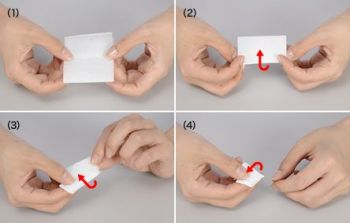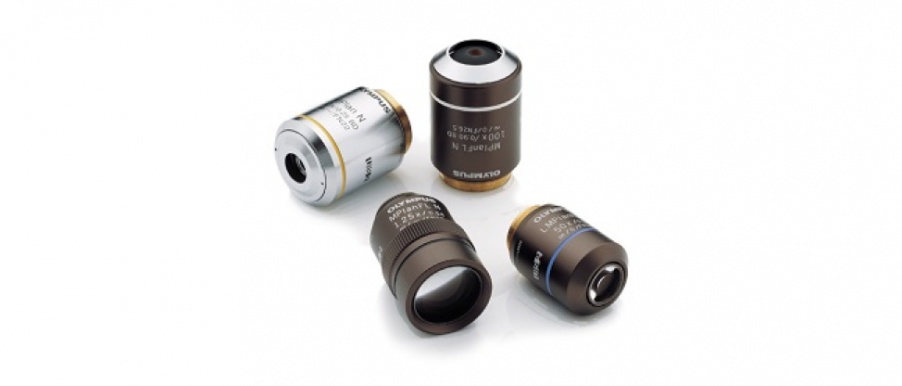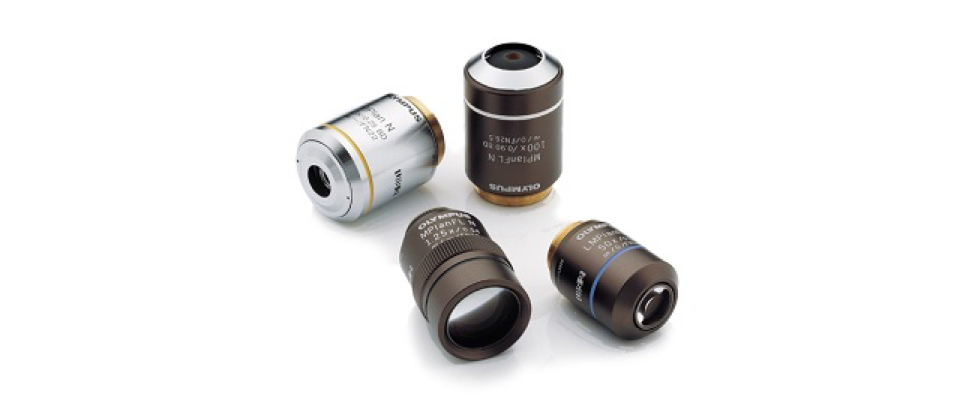Objectives are precision pieces of microscope equipment, so they must be cleaned to ensure proper optical performance. Despite this, researchers and lab technicians often forget to clean their immersion oil objective lenses—and end up facing some sticky consequences.
Today, we will provide six tips to properly clean oil off your objective lens. Keep reading to learn the best tips and techniques.
1. Clean off the oil immediately after using it.Dried oil is not only tough to remove from an objective lens, but this sticky substance can easily trap dust, dirt, fingerprints, and other contaminating particles. A little trapped dust can compromise image quality and cause optical errors like shade or fog. Not to mention, the dried oil can deteriorate the objective lens over time. For this reason, we recommend cleaning immersion oil off your objectives right after using it. The oil will still be wet and easy to remove. |  |
By following this good lab practice every time, you ensure that the microscope system is ready for the next technician to use. Otherwise, the technician might unknowingly contaminate samples and other objectives with the oil residue. They also won’t need to spend time removing the dried immersion oil and can perform their observations on schedule.
2. Use the eyepiece to inspect any dust on the objective.
 | Objective lenses are usually very small, so it can be difficult to see any dust on the lens. Fortunately, we have a neat trick to overcome this challenge. Simply remove the eyepiece from the microscope and hold it up to the objective lens. Now you can look through the eyepiece to magnify any dust you need to clean. Alternatively, you can use a loupe if you have one readily available. Sometimes an objective is too tightly secured on the microscope to remove for inspection and cleaning. In this case, adjust the objective to an angle where you can easily clean the lens. |
3. Remove any dust or dirt with a blower.
Now that you’ve inspected the lens, start the cleaning process. As a first step, use a blower to remove any dust or particles from the objective lens without touching it.
4. Fold a piece of lens paper to create a point.
Now grab a fresh piece of lens paper and fold it to create a point. Keep in mind, the way you fold the lens paper depends on the size of the objective.
For large objectives, simply wrap the lens paper around your finger. This will allow you to easily wipe the entire lens surface. Do this folding technique in four quick steps, as shown in the image below:

Many objectives are on the smaller side, so your finger may be too large to wipe the lens surface. In this case, simply create a triangle with the lens paper to create a point.
Remember, always use lens paper rather than facial tissues or lab tissues. Consumer tissues contain loose, coarse fibers that can scratch the lens surface or break off and remain on the lens.
5. Soak the lens paper in a suitable solvent.
Next, soak the lens paper in a suitable solvent that can dissolve the oil and clean the lens without damaging it. We recommend anhydrous alcohol, a commercially available lens cleaning solution, or blended alcohol.
Keep in mind, these cleaning solutions are flammable so you must handle them with care. To help prevent any risks, turn off your microscope and any surrounding lab equipment, and ensure the room is well-ventilated.
6. Wipe from the center to the outside in a spiral pattern.Now take the soaked lens paper and wipe the lens from the center to the outside in a spiral pattern. This wiping technique moves any dust or dirt to the periphery. To check your work, use the eyepiece or loupe to look for any residue. If any traces of immersion oil remain, fold and soak a new piece of lens paper and wipe again. Repeat these steps until the objective lens is completely clean. |  |
One great thing about the spiral wiping technique is that you can use it to clean other optical surfaces, such as a camera lens, condenser lens, or glass plate. If the surface is too large to wipe with your finger, then simply hold the lens paper on the surface while rotating the object by touching only the edges.
The image below shows how to use this technique to clean a glass plate.

One last note before we wrap up: After cleaning any optical microscope accessory, always look for any remaining dust or oil using an eyepiece or loupe to confirm that it’s clean. Then immediately reattach the cleaned component on your microscope to keep the system organized.
The importance of keeping your objective lens clean and oil free
We realize it’s easy to get distracted in the lab — you have samples to prepare and meetings to attend. But taking a minute from your busy routine to clean oil off your objective lenses can ensure good image quality and prevent expensive equipment replacements.


